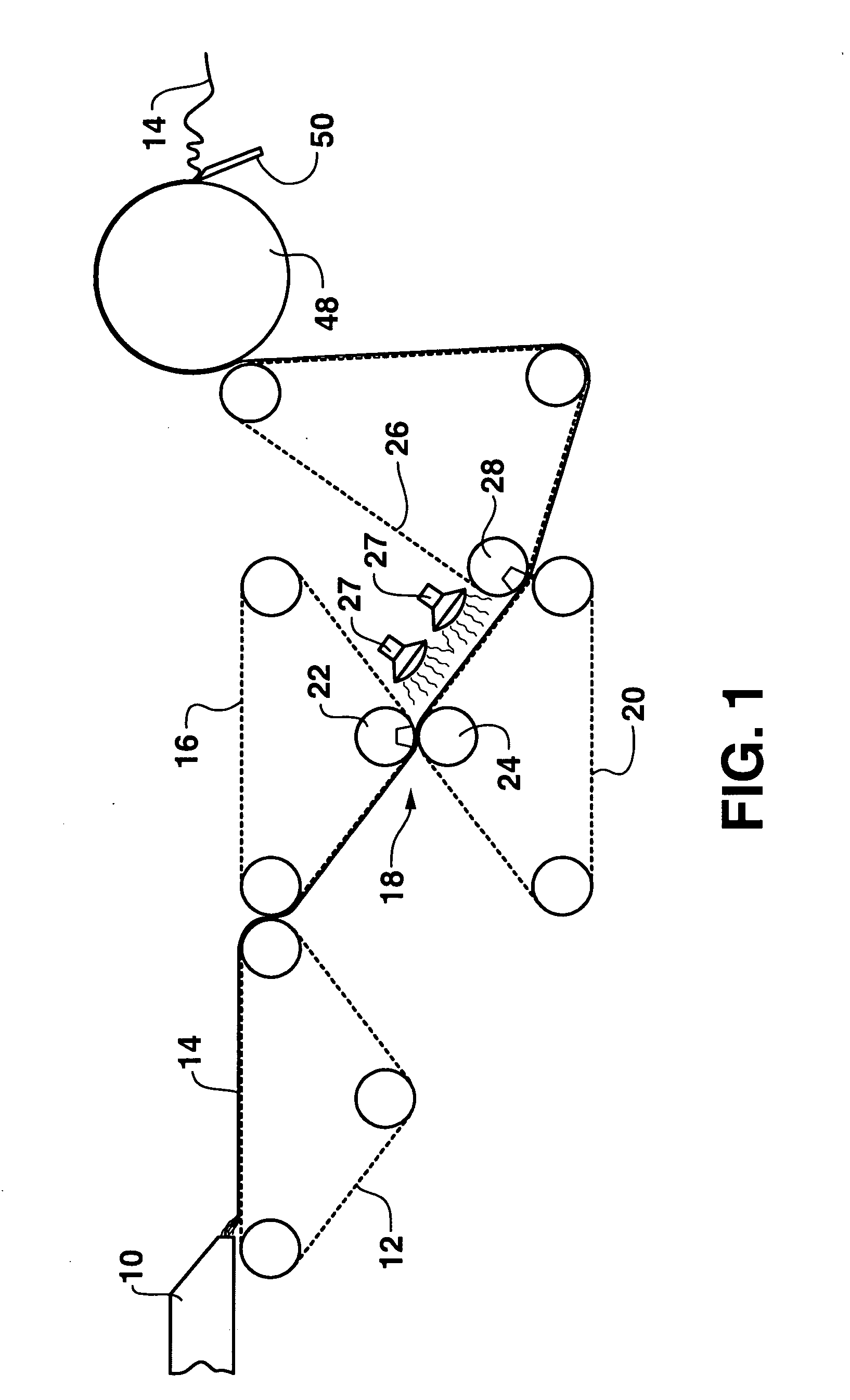Method of transferring a wet tissue web to a three-dimensional fabric
a three-dimensional fabric and wet tissue technology, applied in the field of three-dimensional fabric transfer, can solve the problems of high construction and operation cost of through-drying tissue machines, and the difficulty of successfully transferring webs, and achieve the effect of low density and good bulk
- Summary
- Abstract
- Description
- Claims
- Application Information
AI Technical Summary
Benefits of technology
Problems solved by technology
Method used
Image
Examples
Embodiment Construction
[0024] It is to be understood by one of ordinary skill in the art that the present discussion is a description of exemplary embodiments only, and is not intended as limiting the broader aspects of the present invention, which broader aspects are embodied in the exemplary constructions.
[0025] In general, the present invention is directed to the formation of tissue webs having good bulk and softness properties while maintaining adequate strength properties. In general, the tissue webs are made according to a wet-pressing process during which a wet web is transferred from a transfer surface to a fabric, such as a coarse fabric. The method of the present invention facilitates transfer between the transfer surface and the fabric. For instance, in one embodiment, the wet web is heated and / or subjected to a vacuum or suction force that causes gases to evolve from the water associated with the web. The gases may include, for instance, water vapor that is generated or may include dissolved ...
PUM
 Login to View More
Login to View More Abstract
Description
Claims
Application Information
 Login to View More
Login to View More - R&D
- Intellectual Property
- Life Sciences
- Materials
- Tech Scout
- Unparalleled Data Quality
- Higher Quality Content
- 60% Fewer Hallucinations
Browse by: Latest US Patents, China's latest patents, Technical Efficacy Thesaurus, Application Domain, Technology Topic, Popular Technical Reports.
© 2025 PatSnap. All rights reserved.Legal|Privacy policy|Modern Slavery Act Transparency Statement|Sitemap|About US| Contact US: help@patsnap.com



